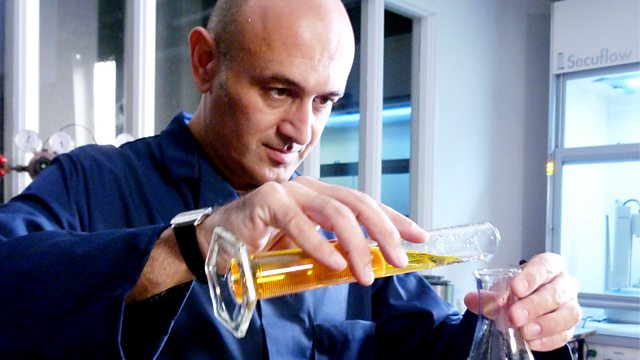Chemistry – A Volatile History episode 2 – The Order of the Elements: Professor Jim Al-Khalili looks at how the early scientists’ bid to decode the order of the elements was driven by false starts and bitter disputes.
In part two, Professor Al-Khalili looks at the 19th-century chemists who struggled to impose an order on the apparently random world of the elements. From working out how many there were to discovering their unique relationships with each other, the early scientists’ bid to decode the hidden order of the elements was driven by false starts and bitter disputes. But ultimately the quest would lead to one of chemistry’s most beautiful intellectual creations – the periodic table.
The explosive story of chemistry is the story of the building blocks that make up our entire world – the elements. From fiery phosphorus to the pure untarnished lustre of gold and the dazzle of violent, violet potassium, everything is made of elements – the earth we walk on, the air we breathe, even us. Yet for centuries this world was largely unknown, and completely misunderstood.
In this three-part series, professor of theoretical physics Jim Al-Khalili traces the extraordinary story of how the elements were discovered and mapped. He follows in the footsteps of the pioneers who cracked their secrets and created a new science, propelling us into the modern age.
Chemistry – A Volatile History episode 2 : The Order of the Elements
Chemistry is the scientific discipline involved with elements and compounds composed of atoms, molecules and ions: their composition, structure, properties, behavior and the changes they undergo during a reaction with other substances.
In the scope of its subject, chemistry occupies an intermediate position between physics and biology. It is sometimes called the central science because it provides a foundation for understanding both basic and applied scientific disciplines at a fundamental level. For example, chemistry explains aspects of plant chemistry (botany), the formation of igneous rocks (geology), how atmospheric ozone is formed and how environmental pollutants are degraded (ecology), the properties of the soil on the moon (astrophysics), how medications work (pharmacology), and how to collect DNA evidence at a crime scene (forensics).
Chemistry addresses topics such as how atoms and molecules interact via chemical bonds to form new chemical compounds. There are four types of chemical bonds: covalent bonds, in which compounds share one or more electron(s); ionic bonds, in which a compound donates one or more electrons to another compound to produce ions (cations and anions); hydrogen bonds; and Van der Waals force bonds.




